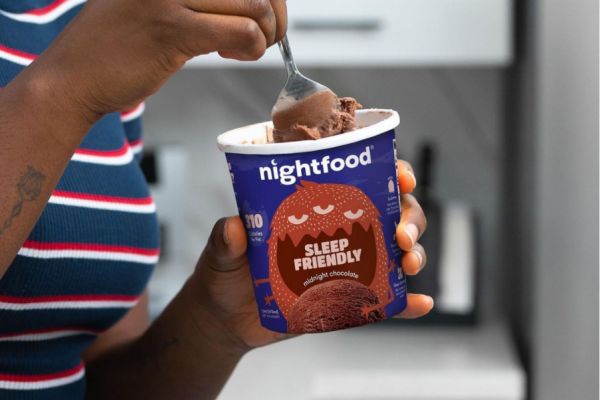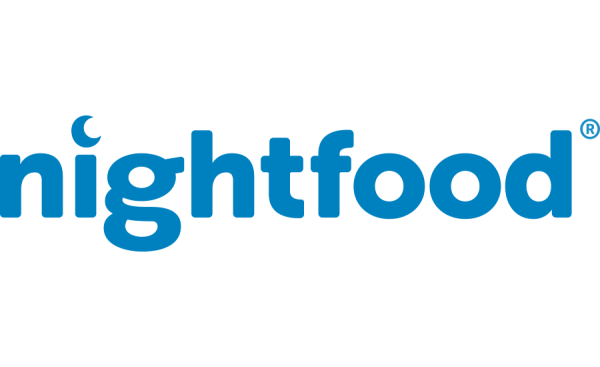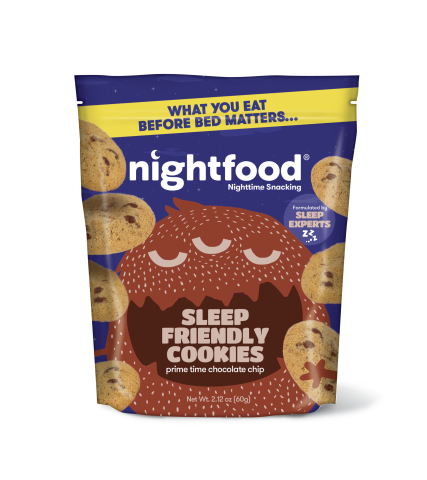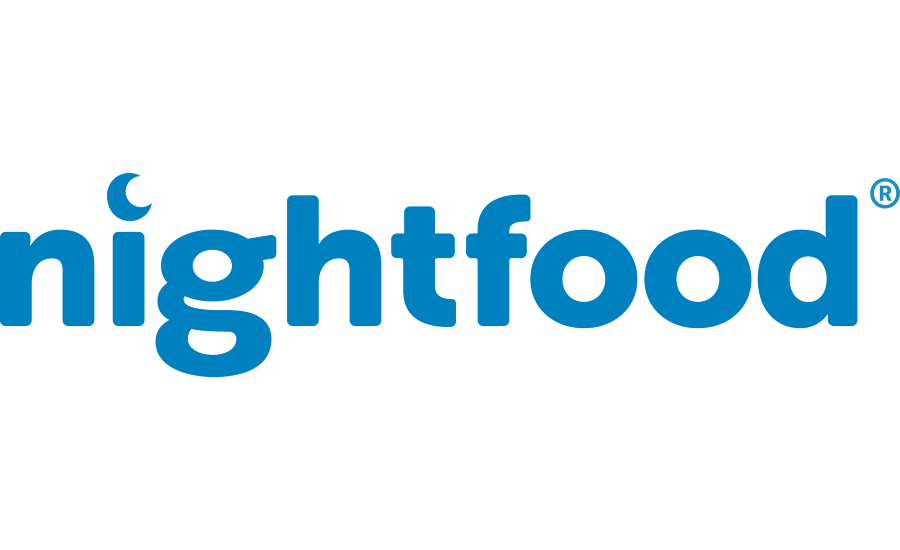
Here’s a story that investors didn’t see coming. A tiny company called Nightfood Holdings (OTCQB: NGTF) is pioneering a sleep-friendly nighttime snack market solving a $50 billion consumer problem. But for all intents and purposes, that’s okay. Priced at roughly $0.05 a share, there is still an opportunity to take advantage of this innovative and fast-growing company at ground-floor prices.
Still, that window could close quickly. Why? Because Nightfood isn’t targeting the existing “snack” sector, they are creating a new market by marketing a line of sleep-friendly nighttime snack foods that has been effectively competing against brand behemoths like Ben & Jerrys, Haagen Dazs. But here’s the catch. While NGTF may sell tasty ice cream and cookies, they do it differently. More specifically, they sell products formulated by sleep and nutrition experts to be healthier options to meet the late-night calorie binge most consumers know all too well.
And the better news is that Nightfood isn’t asking people to give up this late-night consumption. In fact, they accept people will continue snacking and recognize that healthier options exist. And not only from a calorie perspective. Nightfood is educating consumers that high-sugar, high-fat, and high-calorie snacks, when eaten before bed, can directly impair sleep quality. And many are listening, including some of the largest hotel companies in the world.

Targeting A Massive Market Opportunity in Hotels
Nightfood sleep-friendly snacks make perfect sense for hotels. After all, guest comfort is a top priority, proven by these hospitality sector players, investing billions to deliver the best quality sleep experience for their guests. That includes upgraded beds, mattresses, pillows, linens…blackout curtains, white noise machines, eye masks, and even ear plugs. Rightly so, good sleep is at the core of the hotel experience.
But these businesses aren’t the only ones paying attention to what’s needed to keep guests and consumers happy and satisfied. Nightfood took the leap to ask why the snack shops and vending machines in the 56,000 hotels across the United States were loaded with sleep-impairing snacks. Apparently, there was no good answer. And that exposed a problem for travelers and the hotel brands themselves, knowing that guest satisfaction ratings are impacted more by the quality of sleep a hotel delivers and less by how many different flavors of Doritos in the lobby shop and the tons of sugar, fat, and calories consumed before bedtime. In other words, proprietors are getting a bum rap.
However, that can change. Knowing that eating junk at night is a key culprit in depriving restful sleep, proprietors can address the issue head-on by responding to a HOTELS Magazine in May 2023 that showed frequent business travelers are unhappy with the snacks available in most hotel lobby markets. It’s not a complicated fix. Responding to the 55% of guests dissatisfied with the typical hotel snack selection and the 92% wanting healthier snack options is just a mouse click away. And providing what guests want, healthier and still satisfying snacks, could be vital to maintain a high level of guest satisfaction.
Remember, every guest that walks out of that lobby shop dissatisfied does more than lower potential brand loyalty; it has the potential to multiply by word of mouth. That combination, especially with digital content able to go viral in seconds, is a brand’s worst enemy.
National Brands Spend Billions To Keep Guests Happy
Think about it. Despite the adage that all news is good news, it isn’t. If it was, multi-billion dollar brand giants like Marriott (NYSE: MAR), Hilton (NYSE: HLT), Intercontinental, Choice, Wyndham (NYSE: WH), Hyatt (NYSE: H), Sonesta, and Best Western wouldn’t need to spend the money they do on better pillows. They could create a campaign narrative and market it like crazy. That’s not really how it works, though. In reality, competition is fierce, with brands fighting tooth and nail for every % of market share and every extra point on a customer satisfaction index. It’s evident after noticing the little things.
When one chain starts putting irons in their rooms, everybody puts irons in the rooms. When one chain upgrades its beds, everybody upgrades their beds. When one chain puts in a waffle maker for breakfast, everybody puts in a waffle maker for breakfast. So, along the same lines, what will happen when one chain steps up its lobby markets and introduces sleep-friendly nighttime snacks? You guessed right: others will follow (and fast).
But forget the future tense. Many are transforming their lobby shops today. And for Nightfood and its investors, that could be a tasty dish of opportunity, and here’s why.

The Nighttime Snack Category Opportunity
Nightfood is ahead of the pack in bringing sleep-friendly nighttime snacks to hotels, actually pioneering the space. And that positions them ideally to tap into and earn a potentially significant share of the over $50 billion American adults spend yearly on nighttime snacks.
Obviously, only a tiny portion of that is spent in hotels. Still, hotels are a critical piece of the puzzle because Nightfood is leveraging hotel distribution to put itself in a position to dominate the nighttime snack market. They understand the power of brand awareness, noting that if a person sees Nightfood sleep-friendly snacks in major hotels when traveling, that means Nightfood is a brand they can trust when shopping in the supermarket.
That evolution is underway. And the largest snack companies in the world are now being forced by this tiny little company to pay closer attention to a market opportunity that could grow from its current size to something appreciably higher.
Remember, over $50 billion is spent annually on nighttime snacks. Many estimates indicate it could be over $65 billion. In fact, a recent Sleep Foundation study reported that the average American adult snacks 3.9 times per week. Extrapolating that there are almost 260 million adults in the USA, it’s easy to do the math and see that with over one billion snacks consumed before bed every week and growing, the market potential can grow exponentially.
Nightfood is working to earn its share. But they aren’t exclusive.

Industry Behemoths Want Their Share
In 2019, Nestlé launched a candy-type sleep aid called GoodNight, and it’s no longer on the market. In 2020, Pepsi announced the launch of a “relaxation” drink called Driftwell, and it’s no longer on the market. In January 2023, Post Holdings introduced a cereal called Sweet Dreams which includes a “nighttime herbal blend.” Will it last longer than the others? Nobody knows. However, these brands did make known that spending millions on market research exposed the need for these types of foods.
Executives from global snack giants Mondelez (Oreo, Ritz), Kellogg’s, Pepsi (NYSE: PEP), Nestlé (OTC Pink: NSRGY), Unilever (NYSE: UL), and more have commented either on nighttime snack habits or the link between nutrition and sleep. So, maybe there is a multi-billion-dollar niche category there. Perhaps more than maybe…, it seems probable, and Nightfood may have cracked the code.
Nightfood sleep-friendly ice cream is in select locations of Courtyard by Marriott, Hyatt House, Holiday Inn Express, Sonesta, and many other global hotel chains. And in March 2023, Nightfood announced it had attained qualified vendor status with Choice Hotels, which recently acquired Radisson. Their 7,500 hotels globally make them one of the largest lodging franchisors in the world. Here’s the most excellent news.
Not surprisingly, sleep-friendly ice cream sells in hotels. Nightfood reported that independent point-of-purchase sales data from industry leader Impulsfy showed that in hotels where Nightfood was head-to-head with Haagen Dazs, and no other pint brands were sold, Nightfood captured an impressive 38% of pint sales against the legendary 60-year old global brand.
Nightfood Is Already Competitive
In other words, while Nightfood ice cream may not usurp Haagen Dazs or Ben & Jerry’s in supermarkets, it could do so when the battleground is situated in hotels, where people buy snacks for immediate consumption in that hour or two before bed. That’s a space that sleep-friendly Nightfood can exploit. And they are even adding to its products arsenal.
Nightfood recently introduced cookies in addition to their ice cream. They aim for hotels to have sleep-friendly versions of all the popular nighttime snack categories: ice cream pints, cookies, chips, candy, single-serve ice cream novelties, snack bars, and more. True, such a broad product line from such an early-stage company would be impossible in supermarkets, but that doesn’t diminish the impact of walking into a hotel market and seeing sleep-friendly snacks across multiple formats.
Those placements can ignite broader market placements into mainstream retail, with its hotel distribution providing validation leading to a significant competitive and strategic advantage over other brands, even those that might be launched by much larger food companies.
That includes Nestlé START and CO. Iberia, which Nightfood announced earlier this year was starting a proof-of-concept test phase to evaluate the potential of the nighttime-specific snack category. The objective of Nestlé START and CO is to “identify and select startups that want to grow by exploiting synergies and thus create new paths and future businesses in partnership with Nestlé.” Remember, Nestlé is the largest food and beverage company in the world. If Nightfood starts to gain traction and has a relationship with Nestlé, things could get very interesting.
Nightfood Provided As A Check-In Amenity
There’s more driving the value proposition. Nightfood recently announced that an international hotel chain with hundreds of locations in the United States has begun testing Nightfood cookies as a check-in amenity at some of their hotels. If this pilot test is successful, that chain is expected to launch Nightfood nationally, as a give-away in all their hotel locations.
The best part about amenity revenue like this is that the hotel buys in bulk and then gives the product away to guests. That means much faster and more predictable income than securing placement in hotel lobby shop stores that might sell a few units per week. If launched, this initiative is expected to generate six figures in monthly recurring revenue.
What’s more, every month, hundreds of thousands of frequent travelers would be receiving Nightfood as a gift at check-in. Imagine what that can do for brand awareness and how it can accelerate adoption in lobby shops across the industry. While that’s speculative, here’s what’s known. If the test results are positive, it could be a massive catalyst for Nightfood regarding revenue, distribution, and category control.
Nightfood Is A Compelling Microcap Consideration
All told, the sum of Nightfood’s parts may expose a value proposition too good to ignore. Moreover, investment at this stage aligns investors with a company pioneering a new sector. Nighttime snackers understand the opportunity and its appeal, recognizing the frustration of working hard to make healthy choices all day, only to mess it all up at night in a few minutes…and then repeat that pattern day after day for decades on end.
Nightfood has indeed laid the groundwork to grow. In fact, if they generate enough traction in the Hiltons and Marriotts to make the leap to the Krogers and the Albertsons, this tiny snack company could shift to warp-speed growth overnight. Those thinking they will need more capital to expand nationally, think again. Like other industries, the behemoths are more apt to grow by acquisition than through years-long research and development. That puts companies already exploring the space, like Nestlé, Mondelez, and Kellogg’s, among others, into the conversation as a potential partner or suitor.
Face it. Because almost half of all snacking happens at night, it stands to reason that every significant snack company worldwide would want to dominate this new category. Most likely, only one will. And considering how well-positioned Nightfood is to seize this unique market opportunity, despite its tiny size, they have an excellent chance of scoring that goal.
Disclaimers: Shore Thing Media, LLC. (STM, Llc.) is responsible for the production and distribution of this content. STM, Llc. is not operated by a licensed broker, a dealer, or a registered investment adviser. It should be expressly understood that under no circumstances does any information published herein represent a recommendation to buy or sell a security. Our reports/releases are a commercial advertisement and are for general information purposes ONLY. We are engaged in the business of marketing and advertising companies for monetary compensation. Never invest in any stock featured on our site or emails unless you can afford to lose your entire investment. The information made available by STM, Llc. is not intended to be, nor does it constitute, investment advice or recommendations. The contributors may buy and sell securities before and after any particular article, report and publication. In no event shall STM, Llc. be liable to any member, guest or third party for any damages of any kind arising out of the use of any content or other material published or made available by STM, Llc., including, without limitation, any investment losses, lost profits, lost opportunity, special, incidental, indirect, consequential or punitive damages. Past performance is a poor indicator of future performance. The information in this video, article, and in its related newsletters, is not intended to be, nor does it constitute, investment advice or recommendations. STM, Llc. strongly urges you conduct a complete and independent investigation of the respective companies and consideration of all pertinent risks. Readers are advised to review SEC periodic reports: Forms 10-Q, 10K, Form 8-K, insider reports, Forms 3, 4, 5 Schedule 13D. For some content, STM, Llc., its authors, contributors, or its agents, may be compensated for preparing research, video graphics, and editorial content. STM, LLC has been compensated up to ten-thousand-dollars cash via wire transfer by a third party to produce and syndicate content for Nightfood Holdings, Inc.. for a period of one month ending on June 10, 2023. As part of that content, readers, subscribers, and website viewers, are expected to read the full disclaimers and financial disclosures statement that can be found on our website. The Private Securities Litigation Reform Act of 1995 provides investors a safe harbor in regard to forward-looking statements. Any statements that express or involve discussions with respect to predictions, expectations, beliefs, plans, projections, objectives, goals, assumptions or future events or performance are not statements of historical fact may be forward looking statements. Forward looking statements are based on expectations, estimates, and projections at the time the statements are made that involve a number of risks and uncertainties which could cause actual results or events to differ materially from those presently anticipated. Forward looking statements in this action may be identified through use of words such as projects, foresee, expects, will, anticipates, estimates, believes, understands, or that by statements indicating certain actions & quote; may, could, or might occur. Understand there is no guarantee past performance will be indicative of future results. Investing in micro-cap and growth securities is highly speculative and carries an extremely high degree of risk. It is possible that an investors investment may be lost or impaired due to the speculative nature of the companies profiled.
Media Contact
Company Name: STM, LLC.
Contact Person: Michael Thomas
Email: contact@primetimeprofiles.com
Phone: 917-773-0072
Country: United States
Website: https://primetimeprofiles.com/

